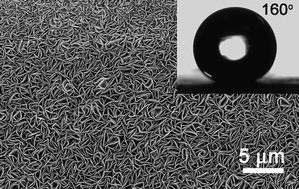Morphology-selective synthesis and wettability properties of well-aligned Cu2-xSe nanostructures on a copper substrate†
Abstract
The morphology-selective synthesis of well-aligned Cu2-xSe

* Corresponding authors
a
State Key Laboratory for Modification of Chemical Fibers and Polymer Materials, College of Materials Science and Engineering, Donghua University, Shanghai, China
E-mail:
hu.junqing@dhu.edu.cn
The morphology-selective synthesis of well-aligned Cu2-xSe

 Please wait while we load your content...
Something went wrong. Try again?
Please wait while we load your content...
Something went wrong. Try again?
H. Chen, R. Zou, N. Wang, H. Chen, Z. Zhang, Y. Sun, L. Yu, Q. Tian, Z. Chen and J. Hu, J. Mater. Chem., 2011, 21, 3053 DOI: 10.1039/C0JM02637A
To request permission to reproduce material from this article, please go to the Copyright Clearance Center request page.
If you are an author contributing to an RSC publication, you do not need to request permission provided correct acknowledgement is given.
If you are the author of this article, you do not need to request permission to reproduce figures and diagrams provided correct acknowledgement is given. If you want to reproduce the whole article in a third-party publication (excluding your thesis/dissertation for which permission is not required) please go to the Copyright Clearance Center request page.
Read more about how to correctly acknowledge RSC content.
 Fetching data from CrossRef.
Fetching data from CrossRef.
This may take some time to load.
Loading related content
